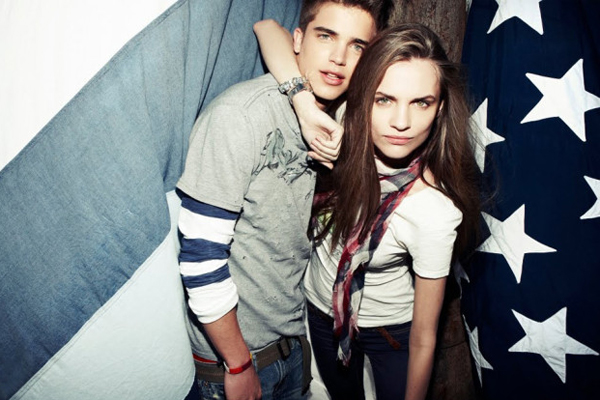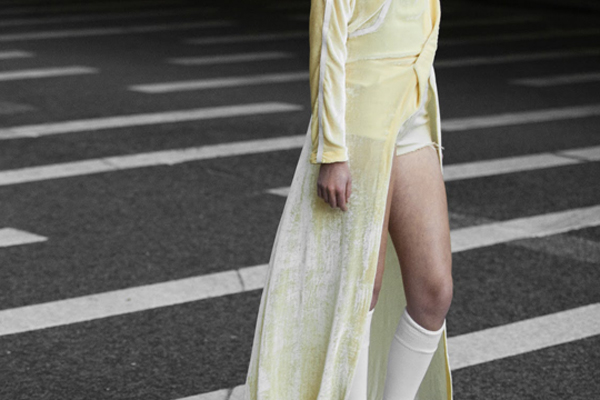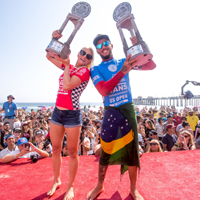
It’s time to call things out for what they really are when it comes to the demise of certain teen retailers. The “3 A’s” including American Eagle, Aeropostale, and Abercrombie & Fitch have been having a hard time of things for a couple of years, and yet there still seems to be a lack of understanding in why teens no longer find these brands attractive. As we’ve been saying and tracking in our Youth Culture Studies for the past few years, we saw this coming a mile away. Percentages among specific demographics declined fast, and other teen brands and retailers climbed in the other direction—meaning that teen retail isn’t dead, but the buying patterns of teens has changed tremendously, and there are many reasons for this.
In a recent article by Business of Fashion on the topic of the 3 A’s, they point out that these stores have had a hard time competing with fast-fashion brands such as H&M, Zara, Forever 21, and the lack of popularity of shopping in malls. While, yes, these have been contributing factors, they are not the entire reasons. Abercrombie & Fitch, for example, has more than pissed-off a large percentage of their target market by flat out stating (from their CEO) the “beautiful” types of young people they are trying to appeal to.
In addition, Aerpostale and American Eagle were late to the movement when it came to getting rid of their oversized logos on everything. Which was so 2006. The no-logo logo movement, launched primarily with brands like American Apparel, changed the game, but all 3 failed to see the shifts. Since 2010, American Eagle has closed up to 50 stores and Aerpostale has closed some 125 stores.
It’s not just the logo thing either. These 3 brands have not been on the radar of cool for some time. Their designs, fits, pricing, and storytelling have been off. While other brands (that are not fast-fashion) such as Vans, Volcom, TOM’s, Supreme, Dickies, and even Carhartt have been on point, the original big 3 haven’t seen the changes in trends and are now in the unenviable positioning of not only catching-up, but trying to push ahead. It’s not that they can’t. Levi’s re-invented themselves quite successfully after recognizing that hip-hop was not actually a “trend” but a growing subculture, bringing back heritage, and now moving in directions of sustainability. But it will take significant effort and an entirely new marketing and brand strategy to fit with today’s tech-savvy youth marketplace.

Which brings me to technology and youth culture. Teens today are the next generation of digital natives. They are online or on their mobile phones far more than any generation previous. This means that brands trying to reach youth culture today, have to be in the space that the marketplace is already in. Malls, for example, may be a form of entertainment (or where their parents drop them off) more than actually for the purpose of shopping (which they can do online). Malls are becoming like TV: An antiquated thing whose purpose has not changed with the lifestyle of the marketplace. Just as young people today tell us that they can’t imagine the idea of “waiting for a TV show to come on at a certain time” and instead choose Netflix or YouTube, malls no longer serve a primary function for finding out about new trends and styles, nor are they all-encompassing locations for actual shopping.
So, when the 3 A’s complain that it’s the decline of malls (which is where they are mostly located) as another reason young people no longer are as attracted to the brand, this is a part of the truth. But it brings to mind the obvious question of why aren’t they doing more to attract young people within the digital realms they are used to?
It’s like dying from a million small cuts. Thanks to technology and communication patterns via social, young people can source out and find new niche brands, styles, and designs. They can also create and sell their own. They can shop vintage on eBay, source entire looks on Nasty Gal or ModCloth, and create their own DIY styles from thrift stores. They can trade-up or trade down, and they do.
In our research, it’s not that entire demographics shop only fast-fashion. They may save for a coveted pair of pricey denim or limited-edition sneakers, and yet round-out their looks with inexpensive, trendy accessories from Forever 21 and masstige collaborations from Alexander Wang’s H&M collection. They are also just as likely to save money to buy a new phone as to by a new hoodie. Personal electronics are also their fashion.
There is also the growing importance of sustainability. As we revealed in our 3rd Annual Sustainability and the State of the Future Youth Culture Study 2014, more young people are aware of sustainability and eco-friendly fashion than ever before. They are also growing demographics that seek out eco-friendly fashion and/or consider wearing their fashion and footwear and denim jeans longer as a form of global climate change protest, awareness, and activation.
It may seem ironic, but more young people today know about sustainability and conscious consumerism from fast-fashion brands like H&M and Uniqlo—both of which promote and elevate sustainability programs within their DNA—than from traditional eco brands such as Patagonia (“the brand my dad wears.”)
The 3 A’s not only need to open their eyes to what’s taking place within fast-fashion, but also sustainability. They also have to see trends that are symbolic to one’s lifestyle, possibly niche, plus stay up to speed with changes in communication, spending, and digital patterns.
For more information about our 2015 subscription programs, presentations, please email info@labelnetworks.com; (323) 630-4000.


